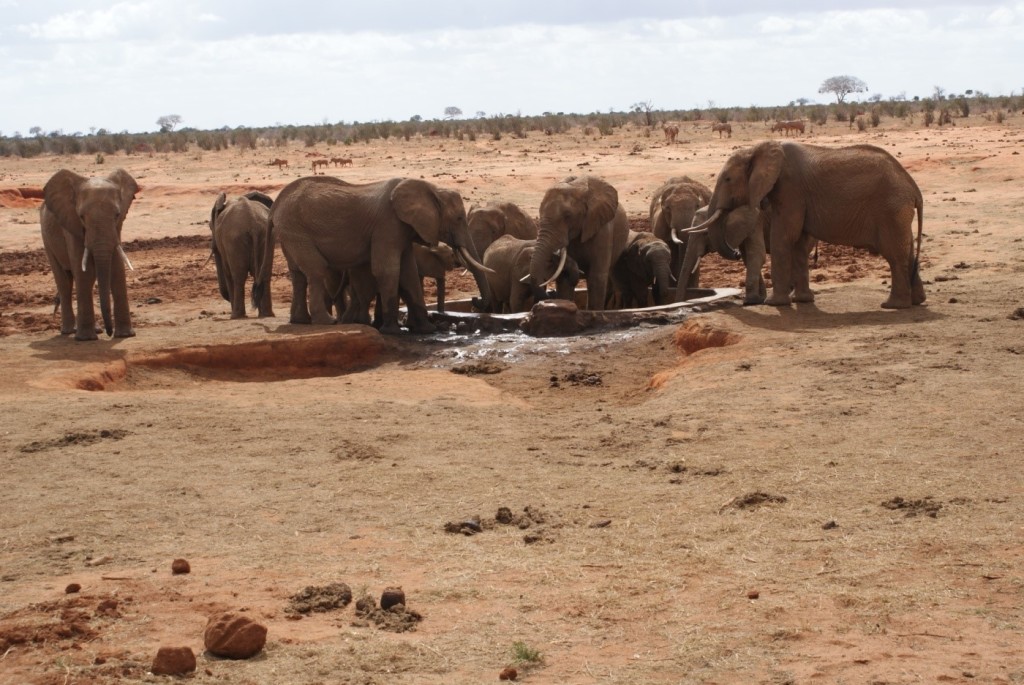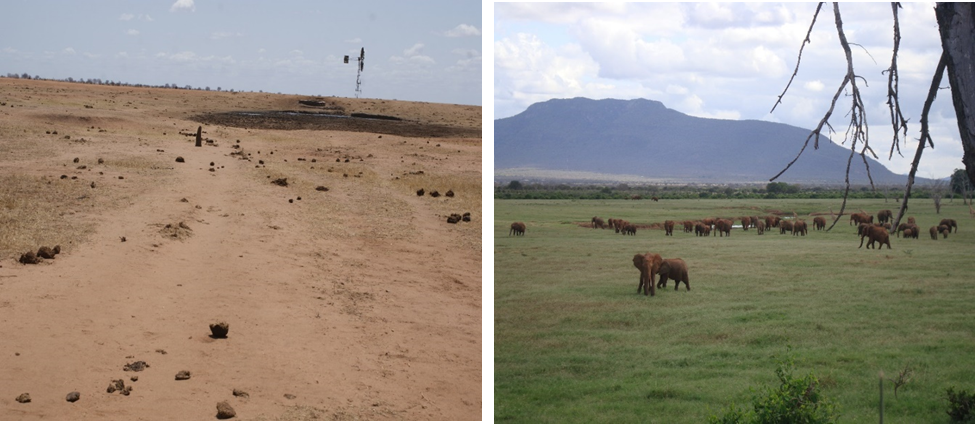
Figure 1: African elephants at a watering point in Tsavo East National Park, Kenya (Photo: Jngatia, TENP, 2011)
Elephants are a key species in ecological systems: they can cause considerable changes to ecosystems by reducing the density of woodland, creating areas of grassland or savannah, and exerting a major influence on the flora and fauna of an area. If elephants became extinct this would therefore clearly have a major effect on other forms of life, even if they occupy only a very small part of the larger environment occupied by elephants.
Elephant populations have become increasingly threatened over the years, with intense poaching (for both ivory and meat) being the main reason for their declining numbers. Although illegal hunting remains a significant factor in some parts of Africa, the most important current threat to elephants is perceived to be the loss and fragmentation of their habitat due to rapid expansion of human settlements and to climate change.
In Kenya, which is my home country, the Tsavo-Mkomazi ecosystem is home to more than 12,000 African elephants (Loxodonta africana). However, the prolonged dry seasons periodically experienced in this area are a major concern for the long-term viability of this important ecosystem. In an attempt to provide a solution to water problems, conservationists and scientists have set up artificial watering points to supply water to animals over a large part of the year and to attract the animals away from the Galana River, which is the only permanent natural water-source in the area. But does this provide a long-term solution to elephant problems, and should we continue setting up more and more artificial watering points?
Such artificial watering points have been successful in solving the water shortage problem, but ironically this success has now presented a new problem due to the high level of vegetation damage caused by elephants around the watering points.
My own observations in Tsavo East National Park (TENP) during 2011 revealed that elephants sometimes walk for tens of kilometers in search of water during dry seasons as it is critical for their survival. However, they prefer to stay close to permanent water sources as this reduces the amount of energy involved in travelling to water, and their population density consequently decreases as a function of distance from watering points.
Can you imagine what happens to the environment when a large number of elephants congregate in one place? The concentration of elephants near surface water contributes to a gradient of intensifying impacts on vegetation. The area within a radius of about 70 m from a watering point is the most affected, as can be seen from the trampled ground and abundance of elephant dung; there is a reduction in woody plants and herbs, an increase in the number of dead tree-stumps, and an increase in the area of bare ground (Figure 2a). However, the evidence of population pressure disappears at distances greater than 5 km from the watering point.
The proportion of palatable woody plants increase with distance from watering points. The environmental degradation around watering points reduces the bio-diversity and has an adverse effect on other animal species, which may suffer from a loss of food and/or cover. Such degradation was noticeable in some of the areas that I sampled: grassland was expanding and grazing species could be seen during the rainy season, with very few browsing species or species that prefer the protection of bushes or woodland (Figure 2b).

Figure 2: Elephant impact around watering points in the TENP: (a) An area of trampling and vegetation destruction, with abundant elephant dung. (b) An area of expanding grassland following elephant damage. (Photo: Jngatia, TENP, 2011)
Elephant damage is seasonal since during rainy seasons they mainly eat grasses and herbs while during dry seasons they browse. They are selective browsers and show a strong preference for certain woody plant species, such as Grewia similis. Their browsing strategies involve bark-stripping, breaking off major branches, and uprooting trees, with the resulting damage varying in extent with the amount of time spent in an area. This results in different degrees of habitat alteration, with the regeneration of vegetation being prevented when elephants do not move on to different forage areas, possibly resulting in permanent changes to the landscape.
The problem that we face as scientists and conservationists today is to find solutions that can meet the challenge of conserving the environment (including wildlife habitats) while at the same time providing a desperately needed reliable water supply for elephants. Is it possible to find a balance between the environmental concerns and water provision? Seasonal closing of artificial watering points in highly degraded areas will have the desirable effect of allowing habitat regeneration, increasing biodiversity on a large scale, and creating refuges for highly browsed and vulnerable plant species. Elephant-tolerant plant species can be found growing close to heavily utilized waterholes, while elephant-intolerant species are likely to survive only in “refuge” areas that are far from water.
Restricting water supplies during dry seasons will encourage elephants to walk for long distances and expand their home ranges. Although they may still restrict themselves to specific watering points they will move away during rainy seasons, when surface water is readily available and there is plenty of grass to graze on. Elephant damage will therefore occur in patches rather than over widespread areas, allowing both elephants and their habitats to be sustainably conserved within the TENP ecosystem. In conclusion therefore, it is important to understand the functioning of natural ecosystems within those remaining environments in which our African elephants exist. Protecting woody plants is an essential aspect of elephant conservation.
This post is part the series published by students of the East Africa Summer school on “collecting, processing and presenting information in bio-geo-sciences”, introduced by Prof. Martin Trauth in a previous snack.







